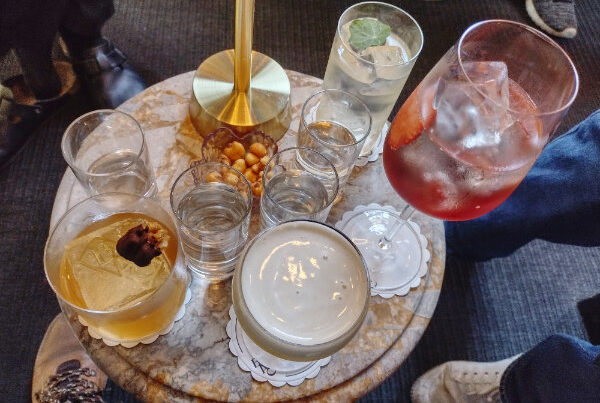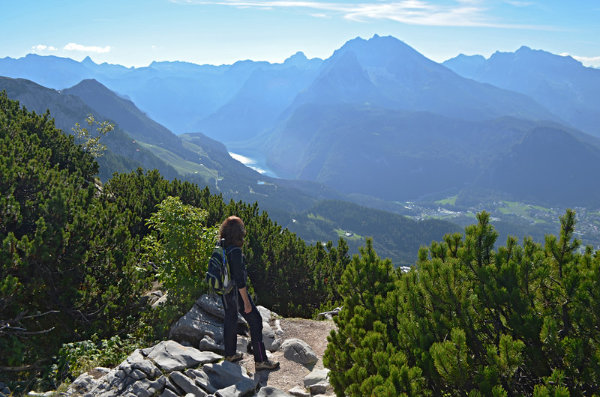It was the first time we had returned to the Canary Islands since the 2021 eruption and we were keen to see La Palma’s new volcano for ourselves.
Walking into the town of Las Manchas, at first everything looked just the way I remembered it when we last visited in 2019, except the petrol station was closed and deserted; I had never seen the petrol station shut before, not even on Sundays.
As we rounded the bend beyond, I suddenly felt as if I’d entered a waking dream. I knew exactly where I was, but something was different, not right, out of place, or more accurately, in place. Directly behind the houses in the upper town, a dark, brooding, volcanic cone loomed. It was impossible not to gasp. How could such an enormous bulk suddenly fill the horizon where previously there had been none? If you had never been to this part of the island before the 2021 eruption, you may not be overly impressed by the proximity to the town of the south flank of Tajogaite, La Palma’s new volcano, but for us it was shocking to see. And even if you were visiting for the first time, you couldn’t fail to see that something was fundamentally wrong at street level. Just beyond bar El Americano, the road suddenly disappeared, like it had never existed in the first place, and someone had seen fit to build a perfectly good road to nowhere, a road that looked as if everyone had simply downed tools and strode off the job leaving infinite mounds of rubble, black ash and tar stretching into the distance.
The following morning, we drove along the west coast road to the exact same spot we had stopped walking the day before. Just before the road’s rude ending, we swung left and swept down the cliffside on a side road. Ahead, the new road clawed out of solidified lava to reconnect the north with the south, barked out its silent orders in a rapid proliferation of signs : ‘NO STOPPING!’, ‘DO NOT LEAVE YOUR VEHICLE!’, and ‘HOT ZONE!’
The tyres crunched over cinders as we drove in a slow procession of mainly trucks. To our right, the black land sloped steeply upwards in a solidified sea of crests and depressions beneath a white sky. Scattered across the slopes, the tops of previously towering pine trees poked out from the ash like mini-me versions of themselves, and the breezeblock shells of houses stood in the wreckage like crash survivors, too shocked to move. Behind their glassless windows, solid masses of debris stood like unwanted house guests. Roofs which collapsed beneath the weight of the lava hung from their singed rafters like limp flags on a breezeless day.
 Above the desolation, La Palma’s new volcano, Tajogaite, rose like a black spectre. Penetrating the dark clouds and swirling smoke that billowed from its summit, beams of sunlight swept the sharp contours of its flanks and the wilderness at its base like celestial searchlights. I snatched glances at the enthralling presence while Jack strove to take pictures from the moving vehicle. ‘NO STOPPING’ shouted another roadside sign as if it had read my mind.
Above the desolation, La Palma’s new volcano, Tajogaite, rose like a black spectre. Penetrating the dark clouds and swirling smoke that billowed from its summit, beams of sunlight swept the sharp contours of its flanks and the wilderness at its base like celestial searchlights. I snatched glances at the enthralling presence while Jack strove to take pictures from the moving vehicle. ‘NO STOPPING’ shouted another roadside sign as if it had read my mind.
As we reached the outskirts of the La Laguna suburb of Los Llanos de Aridane, the black deluge stopped, as abruptly as it had begun. A large, two-storey breeze block building stood, one half buried beneath a solid block of dark grey ash that reached up to just below its second-floor windows while, in the other half, people sat on a large terrace drinking coffee and reading their newspapers in the morning sun, as if having half the building engulfed in solidified lava was a perfectly natural architectural feature around here.
The further we drove, the less evidence we saw of La Palma’s new volcano or indeed, that there had ever been an eruption that rocked the entire island for 86 days in the late summer of 2021. Despite the devastation it had wrought on the island’s infrastructure and economy, beyond the directly affected section of the west coast and its upper reaches, there was no evidence of any disruption. As green and floral as it ever was, La Isla Bonita shone beneath the intense blue of its firmament.
Travelling into the Caldera de Taburiente later that morning, familiar signposts that had towered above us now only reached our elbows. Miraculously, many of the pine trees still flourished despite their trunks having been buried in half a meter of 800°C ash. But the once-familiar landscape had changed beyond recognition, its uniform unfamiliarity slightly unnerving like once again, I’d stepped into that parallel dream world where something was decidedly wrong.
“La Palma’s new volcano is right there.” Jonas pointed to a dense fog beyond which we could see… nothing. When we reached the small viewpoint from which you can see into the crater of the volcanic infant, we saw nothing but a swirling bank of clouds and thick fog. We had been five days on the island and this was the first day the sun had chosen not to put in a full shift, allowing the bruma (low cloud) to hold the day hostage. I was disappointed and yet, I found myself smiling. La Palma wasn’t allowing me to see everything; if I wanted a close look at her latest child, I would have to come back another day.
After so long without visitors, the island needed its tourism to return. No real hardship.








Beautifully written, evocative piece, Andi.
Thank you, Richard, that means a lot coming from an author like you.